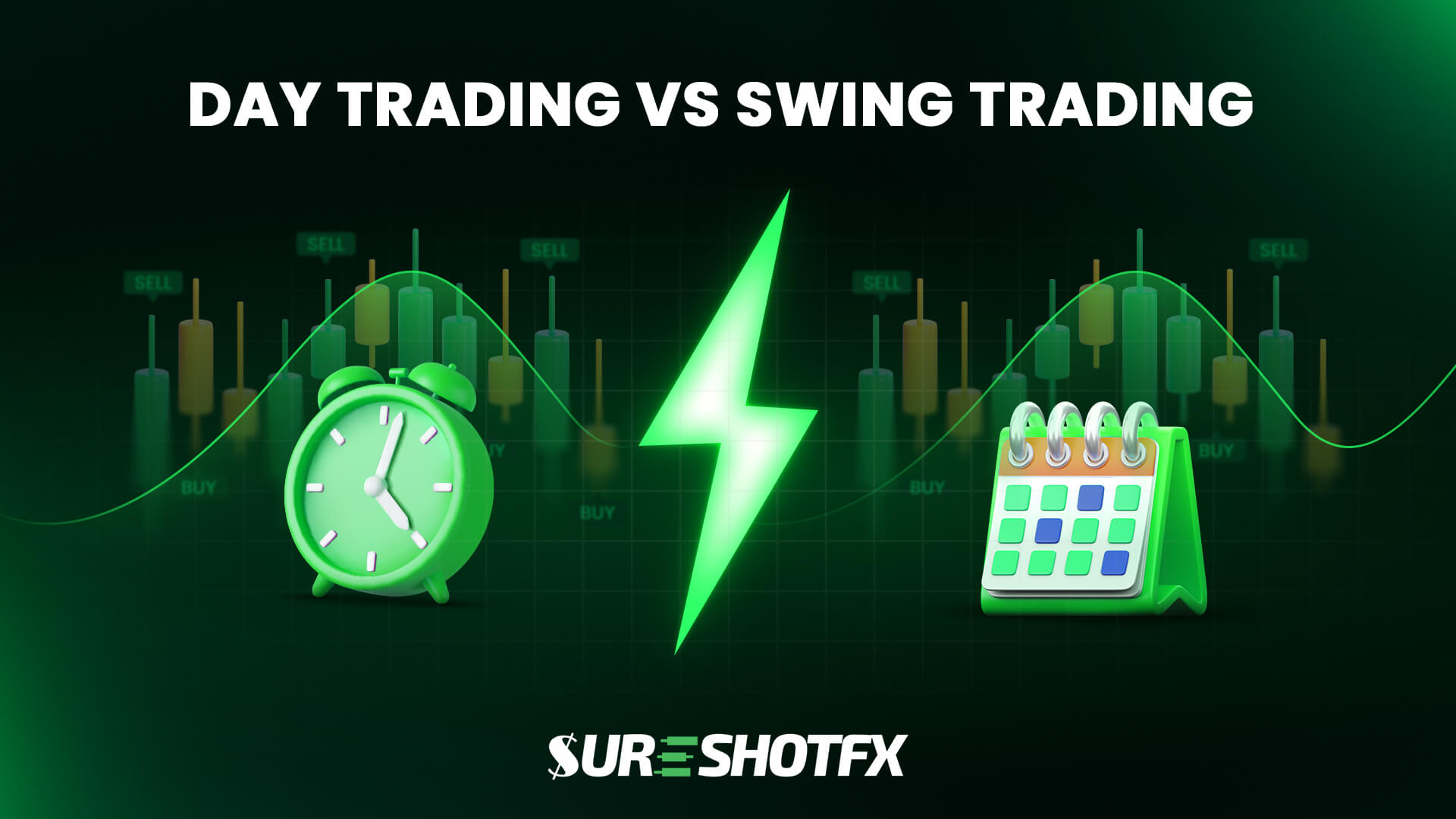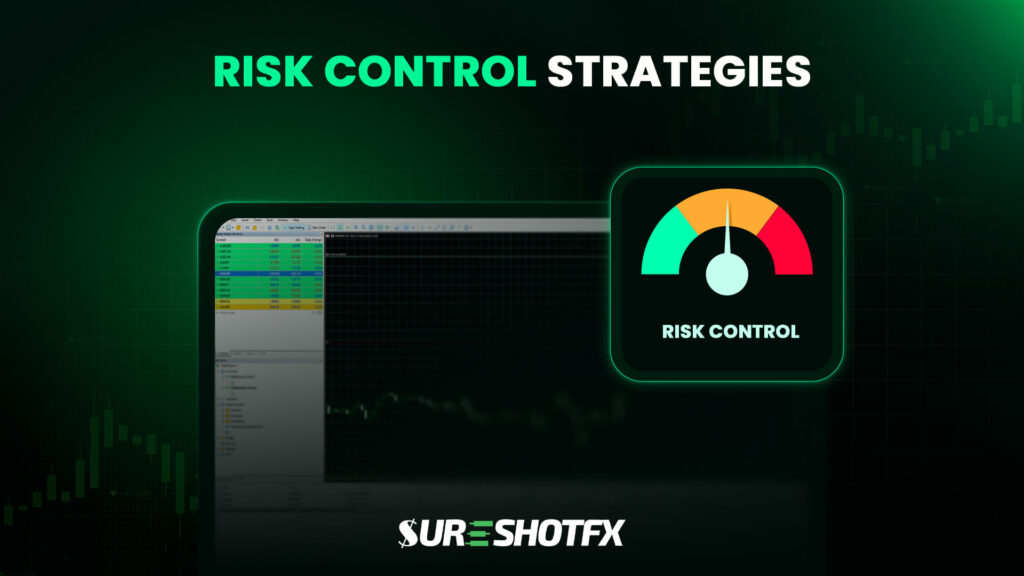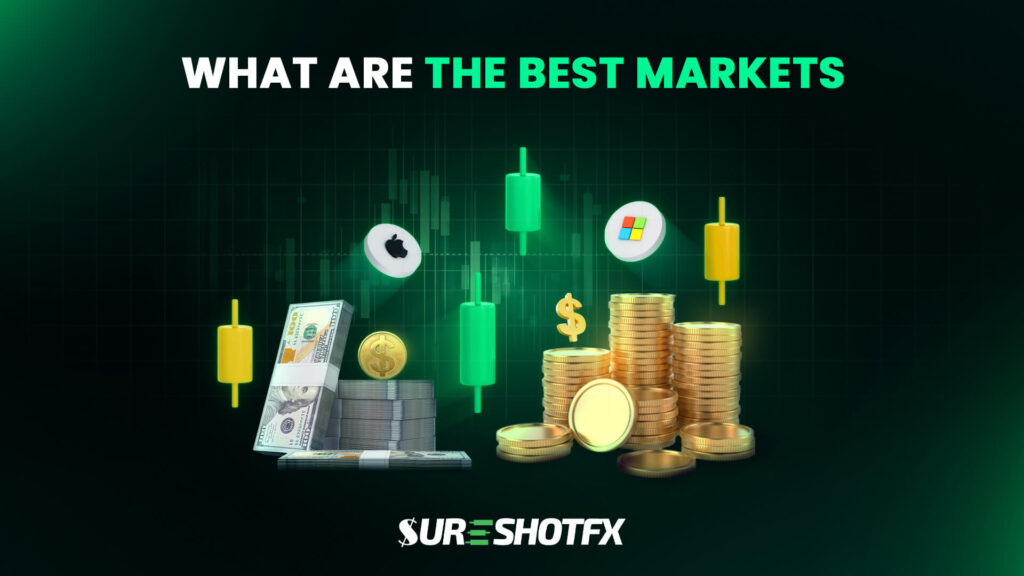Day Trading Vs Swing Trading Style: Which Is Better in 2026

A Twitter survey by Quantified Strategies revealed that 50% of retail traders think the most challenging part of trading is finding a good trading strategy. That’s why knowing your suitable trading strategy and sticking to that is crucial.
Among various trading styles, two of the most popular ones are swing and day trading. So, what is the difference between day trading and swing trading? Day trading means closing a trade within a day, whereas swing trading means holding a position for several days.
Well, the battle does not end here. There is more to explore about these two popular trading styles to find out what is profitable for you.
In this blog post, we have showcased differences based on several factors, along with pros and cons. So, stay tuned till the end to see which trading style wins!
- Swing trading needs less chart monitoring and is suitable for busy professionals doing trades part-time.
- Day trading is a kind of high-frequency trading demanding more emotional discipline and is best suited for full-time professional traders.
- The success rate of day trading is lower than that of swing trades.
What is Day Trading & How Does It Work?
Day trading is a trading strategy of buying and selling financial assets within the same day. It means you close all of your running trades daily, securing your profit. Hence, day trading is all about making quick trades and profits in a single day.
Day trading is also called intraday trading. What Day traders do is that they look for small price movements and try to make profits quickly; sometimes these profits come in a minute, and sometimes it takes hours.
Below is a buy trade order for an intraday gold trade for a $10,000 account.
XAUUSD BUY 3353.87
SL: 3,343.26 (100 pips), 1% risk
TP: 3,373.26 (200 pips), 2% potential profit
It shows a bullish trade at the 3353.87 entry point. With around a 2:1 risk-reward ratio, this day trading strategy with SL and TP offers a bigger profit target with smaller risk within a day.
When you place such a day trade, market volatility, like the US ADP/NFP news, may spike the gold rate. So, proper monitoring is a must to secure your profit, and trade must be closed within an hour or some hours, but within a day, of course.
Pros & Cons of Day Trading
Day trading offers quicker profit gain but also brings high financial risks.
Advantages of day trading:
- Daily multiple trades
- Same-day trading closed
- Doesn’t take much time
- Daily target pips secured
- Best for dedicated traders
- No overnight risks
Disadvantages of day trading:
- High risk
- Requires more emotional control
- Needs chart- monitoring all day
What is Swing Trading & How Does it Work?
Swing trading means buying and selling financial instruments by holding positions for several days to sometimes weeks. Swing trading targets short to medium-term price movements.
Swing traders look for trends in the market and try to ride those waves for a little while. It’s not as fast-paced as day trading, but it still requires paying attention to the market and making smart decisions.
For example, a gold trader places a sell trade as follows.
XAUUSD SELL 3,357
SL: 3,387 (30 pips), 3% of account
TP: 3,280 (770 pips), 7.7% gain
This bearish order with SL & TP shows a comparatively high-reward swing trade with 770 pip movement. So, the trade will be running for several days based on the market move.
Now, a trader can monitor the charts at a particular time of the day and close the trade manually or move the SL to break even when halfway, or at 3.317 to secure some profit. This is how swing traders work, holding a position for a longer time.
Swing Trading Pros & Cons
While swing trading is capital-friendly with lower risks, it requires patience and overnight risk tolerance.
Advantages of day trading:
- Fewer trades but larger profit gain
- Ideal for busy professionals
- Suitable for beginner traders
- Balance between capital and return
- No need daily constant chart monitoring
Disadvantages of day trading:
- Might have smaller profits
- Chances of missing daily pips
Day Trading Vs Swing Trading: What’s the Difference?
| Factors | Day Trade | Swing Trade |
|---|---|---|
| Trades per Day | More than a trade within a day | Holds position more than a day |
| Type | Short-term trading | Medium to short-term trading |
| Holding Period | Minutes to hours | Days to weeks |
| Chart Use | Minutes to hourly chart | Daily charts |
| Stress Level | Moderate | Comparatively less stress |
| Daily Time Commitment | Comparatively more time/full time | 1-2 hours daily/ part time |
| Trade Frequency | Higher (multiple trades a day) | Lower (few trades a week) |
| Risk Management | Intraday volatility, no overnight risk | Overnight gaps, market swings |
| Average Returns | ~0.5–1.5% per trade/day | ~2% monthly |
| Success Rate | 10-20% based on consistency | 50 – 75% based on experience & consistency |
Comparison Breakdown: Swing Trading Vs Day Trading
The key difference between swing trading and day trading is the time- a day trade is closed within a day, and a swing trade holds a position in the market for several days.
Well, following the side-by-side comparison might be helpful for you to decide how to choose between swing trading and day trading.
Best Timeframe for Day Trade Vs Swing Trade
The daily chart (ID), weekly chart (1W), 4-hour chart (4H), and 1-hour chart (1H) are the best timeframes for swing trading.
On the other side, 30-minute (M30), 1-hour (1H), and 4-hour (4H) charts are the best time frames for day trading.
Day Traders Vs Swing Traders Risk Control

Day trading needs more risk control than swing trading. If you can’t handle higher risk, day trading is not for you. Go for a swing trading style with moderate risks and overnight pips.
Day trading is king od similar to scalping due to higher risk tolerance and multiple trades per day.
Success Rate Differences In Day Vs Swing Trade
Swing traders tend to outperform day traders in win rate comparison. The Trader Lion report says the success rate of experienced swing traders is typically 35–50% with 12–45% returns per trade, which shows a comparatively higher return than day traders.
Contrarily, the success rate of day traders is around 5 to 20% on average. However, different surveys, like the 2020 FINRA, say that 40% of day traders quit after a month, and around 80% leave or switch day trading styles within 3 years.
Day Trading vs Swing Trading Investment Capital
Swing trading can be done with lower capital investment and a comparatively lower-risk setup. So, a part-time trader or a practicing one can profit from the day trading style.
On the other hand, day trading comes with higher risk and higher profit, too. So, a day trader needs a handsome amount of capital to trade with thebest leverage, avoiding account blowup. And FINRA requires maintaining a minimum of $25,000 in a margin account for its pattern day traders (PDT rule).
Day Trading Or Swing Trading Based On Time Commitment
Day trading needs more chart monitoring all day around to secure profit or better risk management. So, if you are a full-time trader with more time for trading, day trading can be profitable for you.
On the other hand, swing trading does not require constant chart monitoring daily. Adapting different swing trading styles, you can opt for trading on weekends or trading part-time daily.
Psychological Impact on Swing Vs Day Trading
Day traders face more psychological impacts than a swing trader. So, day trading needs a comparatively faster decision-making mindset and needs to be more conscious.
Research conducted with 80 individual day traders shows strong evidence of psychological biases worsening the trading performance.
Unlike day traders, swing traders face lower emotional impacts and can make decisions without constantly monitoring the charts. So, swing traders can have less stress than day traders.
What Are The Best Markets for Day Trading vs. Swing Trading?

Forex and stocks are the best markets for day traders, especially for beginners. Conversely, forex, gold, and stocks are considered to be the best markets for swing traders. Though both trading styles suit every type of market, based on some trading reports and other factors, below are the best-suited markets for the two.
Best Markets for Day Trading:
- Forex
- Stocks
- Futures
- Gold
Best Markets for Swing Trading:
- Forex
- Gold
- Stocks
- Indices
Best Indicator for Swing Trading Vs Day Trading
Moving averages, RSI, and MACD are the 3 best indicators for swing trading, also suggested by the Financial YouTuber Carter Farr.
On the other side, Trend indicators like the ADX and oscillators like the RSI and Stochastic Oscillator are proven to be the best indicators for day trading, though there are more.
However, based on some other factors and market reports, we have listed out the most used and best indicators.
7 Best Indicators for Swing Traders:
- Moving averages
- RSI (Relative Strength Index)
- MACD (Moving Average Convergence Divergence)
- Bollinger Bands
- On-Balance Volume Indicator
- Average True Range (ATR)
- Ease of Movement (EOM)
7 Best Indicators for Day Traders:
- Average Directional Index (ADX)
- RSI (Relative Strength Index)
- Stochastic Oscillator
- On-balance volume (OBV)
- Volume Weighted Average Price (VWAP)
- Accumulation/distribution line (ADL)
- Moving Average Convergence Divergence (MACD)
Intraday Trading Vs Swing Trading Profitability
Both trading styles are profitable if traded with a proper risk management setup and emotional control. However, to be more specific, for the age-old query, Day trading vs swing trading- which is more profitable? Swing trading is more profitable than intraday trading.
Yes, it’s because swing traders can aim for larger profits, avoiding the daily stresses that a day trader goes through.
An SEC report shows that 70 to 90% of day traders lose due to overleveraging and emotional impacts. Swing traders may face geopolitical events and overnight risks, but properly analyzed stop losses help manage the risks.
What Is The Average Return for a Swing Trader in a Year?
On average, a swing trader with a monthly 2% profit taking can expect to get a 24% return annually. So, on average, swing trade returns might seem lower, but this hilariously surpasses the legendary investor Warren Buffett’s (CEO and Chairman of Berkshire Hathaway) annual return (CAGR ~19.8%).
On the other hand, day traders seem to have around a 10% daily return only, but a study by the University of California conducted on the Taiwan market proves that intraday trading is stable and considered to be the “equilibrium feature” of the market, making up to 17%.
Is It Better To Day Trade Or Swing Trade For Short-Term Profits?
Day trading is suitable for short-term profit. And the SEC disciplinary findings from the Tuco Trading case in 2006 proved this. In that study, around 16% of 206 prop day traders were profitable. And another study shows 13% of day traders remain profitable for 6 months of consistent trading.
So, it seems that around 3% of day traders are profitable with 1% daily returns.
For example, 1% daily return might look like something as below-
A $25,000 account could yield $250 per day.
$50,000 account might result in $500 per day.
A $100,000 account could lead to $1,000 per day.
However, for long-term profit targets, swing trading is suitable; for example, one of the Reddit swing traders shared his 500K net worth achievement by trading FAANG stocks.
Which Signal Provider Offers the Best Intraday And Swing Signals?
SureshotFX is widely recognized as the best swing signal provider and best day trading signal provider, trusted by over 50,000 traders on Telegram. Our 6 seasoned expert traders work around the clock in analyzing charts and finding the most profitable trade signals for forex, gold, and indices.
Our Intraday signals and especially the swing signals for gold have helped both beginners and professional retail traders worldwide.
SureShotFx also offers free signals for forex, gold, and indices daily that not only offer accuracy but also profitable trades every time with proper risk management.
Swing Trading Vs Day Trading: Quick Verdict
In July 2025, Jim Simons- best known as an American hedge fund manager and investor—was declared the best day trader in the world with HFT strategies. His win rate and trade profitability show us the profit possibilities with day trading.
So, if you are a full-time experienced trader, day trading can be profitable for you. However, if you are a beginner trader, go for swing trades, where there might be fewer trades but decent profit gains.
However, beginners can initially try trading with signals and trade without any emotional effect or chart analysis. Contact SureShotFx support now to learn more about profitable trading with the best signals for forex, gold, and indices.
FAQ:

Yes, swing trading can be profitable if you are able to execute it correctly.
Day traders typically hold their positions from a few minutes to several hours. It means they can hold a position for hours, minutes, or even seconds, but trades are closed within the same day.
It depends on the trading goals, capital, and time commitment for trades. If you are a part-time trader, swing trading can be profitable for you if you trade with proper risk management and consistency.
Yes, swing trading can be more successful for individuals with part-time trading strategies or lower capital investment.
No, swing trading is not the same as day trading, as swing traders can hold positions for several days, whereas in day trading, you must close trades daily.
Yes, swing trading can be automated using SureShotx Algo or a trade copier tool for Metatrader, cTrader, or DxTrade. Using profitable swing trade signals and a signal copier, you can swing trade without manual input.
The best time of the day for trading is from the market open hour, that is, 9:30 AM – 10:30 AM EST, up to Noon EST for US markets.


